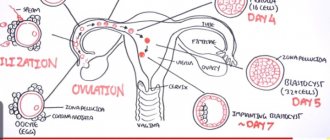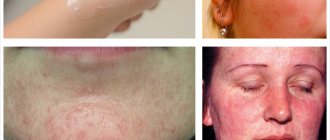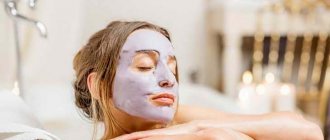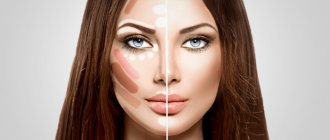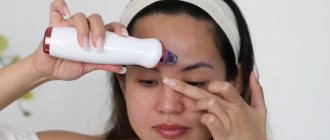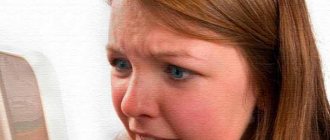What is acne?
Today everyone probably knows what acne is – acne-like, often painful pimples on the face.
It is not so easy to cure this disease; it requires long-term combined treatment.
For more complicated forms of acne, doctors sometimes prescribe serious hormonal medications. The main thing in this case is not to prolong the course of therapy.
In order not to damage the skin microflora and the general condition of the body, the duration of taking medications should not exceed 2-3 months.
Of course, self-medication is excluded in this case. Before you start taking any medications, you should consult a dermatologist. An experienced specialist will determine the extent of the disease and prescribe the optimal treatment.
Causes of acne
As a rule, acne causes trouble in adolescence, and after a few years it goes away without a trace. However, this disease often drags on for many years.
The basis for the occurrence of acne disease can be various reasons:
- medications that cause hormonal imbalances;
- production of excess sebum by the subcutaneous glands;
- increased levels of hormones in the body;
- external irritants – dirt, dust;
- infected wounds on the skin of the face;
- various inflammations;
- hereditary factor.
Treatment depending on the causes
Problems with the epidermis are caused by various reasons. Most often, external factors influence: cold, direct sunlight, too dry air. In this case, you need to protect your skin from adverse climatic and weather conditions. It is recommended to humidify the air and use special skin creams. But irritation, redness and peeling on the face can also be caused by various pathologies.
Allergic reaction
The cause of peeling and irritation is sometimes an allergic reaction. In this case, an additional symptom occurs - itching. Irritation manifests itself in redness of the skin, the appearance of a rash and even blisters (with hives).
Treatment in this case should be comprehensive, i.e. you need to take antihistamines, for example, Claritin, Zyrtec.
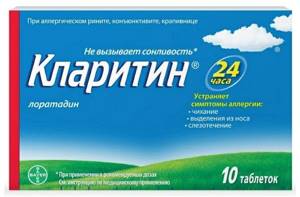
Local therapy plays an important role. You can use Fenistil gel. For severe inflammation, peeling and the appearance of red spots, ointments from the glucocorticosteroid category - hydrocortisone - are recommended.
Contact dermatitis
Contact dermatitis manifests itself in a similar way. A pathological skin reaction is caused not by allergens (pollen, animal dander, house dust), but by various irritants - chemicals and even metals, including cleaning products based on ammonia and sodium orthophosphate, as well as agricultural chemicals.
Most often, contact dermatitis occurs on the hands. But if you are careless, chemicals can get on your facial skin. In this case, it is necessary to eliminate contact with irritants and use glucocorticosteroid ointments based on hydrocortisone and prednisolone as local therapy. For mild forms, zinc-based ointments are sufficient.
Infectious redness of the skin
Infectious causes of irritation include erysipelas, acne, microsporia, trichophytosis, etc. Demodicosis occupies a special place. It is caused by a microscopic mite.
Antibiotics and local bactericidal and antiseptic agents are used for treatment.
Inflammatory redness of the skin
Inflammatory processes can be caused by various factors: the use of cosmetics, photosensitivity (increased skin sensitivity to sunlight when taking certain medications or procedures), psoriasis, dermatitis. You will have to give up cosmetics. If photosensitivity occurs, you should stop taking the provoking drug. In other cases, appropriate drug treatment is required.
Eczema occupies a special place. With this disease, peeling, vesicles, redness, and crusts appear on the skin. Antihistamines, anti-inflammatory nonsteroidal and hormonal drugs, and antibiotics are used.
Diseases of internal organs
Redness and peeling of the facial skin can be caused by diseases of the internal organs, such as:
- diabetes;
- increased body temperature;
- atherosclerosis;
- heart and kidney failure;
- hypertension;
- decreased level of acidity in the stomach;
- pathology of the trigeminal nerve;
- cirrhosis of the liver;
- erythrocytosis.
Treatment is different in each case. The doctor selects the therapy.
Vascular diseases
Most often, facial redness is caused by rosacea and rosacea. The latter represents an increased reactivity of blood vessels to changes in temperature, weather conditions and other factors, as a result of which they expand. The appearance of such pathologies is associated with genetic predisposition.
Cuperosis is the dilation of blood vessels in the skin, but they never return to their original position, which is why the skin of the face takes on a reddish color. The condition is provoked by cirrhosis of the liver, gastritis, hypertension, etc. “Spider veins” are clearly visible on the face.
In the early stages of rosacea, it is enough to protect the skin from ultraviolet radiation and weather conditions and moisturize. In advanced cases, coagulation of destroyed capillaries and their sclerosis are required.
Hyperemia and erythema
Hyperemia is excessive filling of blood vessels with blood. Erythema is redness of the face due to severe dilatation of the capillaries. On the face, the cheeks turn red first. Blueness may appear.
How to get rid of acne?
Acne can be eliminated in different ways. For example, apply cosmetic powder or foundation to an inflamed face. However, doing this for inflamed acne is not recommended.
This method will only remove acne marks externally. The smallest particles of powder and cream will clog already irritated pores on the skin, thereby promoting the formation of new pimples.
As we wrote above, medications will help cure acne, especially its severe form.
All kinds of masks, scrubs, lotions, and tonics will help you effectively get rid of mild acne at home. These products will not only cure acne, but also:
- nourish the skin with beneficial substances;
- rejuvenate the face;
- will make him healthy.
However, it should be borne in mind that the use of such products will produce results if they act in combination with vitamins.
The main thing is to use natural products, choose the ingredients wisely and take into account the characteristics of the skin.
Even the best acne mask will not help if you are not eating well or have bad habits.
Causes of skin irritation
In order to effectively and quickly eliminate inflammation of the skin, regardless of the area of concentration of irritation, it is necessary to understand what specifically resulted in the negative response of the epithelium. In other words, it is necessary to establish the “personality” of the stimulus. The reasons, as mentioned above, can be very different, and treatment will most fully manifest itself only if a provoking factor is detected and eliminated (neutralized).
The leading position in this issue is shared by three “keys” that trigger the mechanism:
- harmful microorganisms that cause infection in the form of furunculosis;
- allergy, that is, the reaction of body cells to histamines, which can be anything;
- the frequency of the menstrual cycle and the hormonal disturbances that occur in connection with this.
The next step is occupied by UV radiation from the Sun. In principle, it is also a kind of allergen. There is even such a thing as “sun allergy”. And the delicate epidermis of the face is most susceptible to this irritant. However, this also includes the so-called “prickly heat” - a rash that appears on the skin under the influence of sweat, and thermal burns that lovers of sunny beaches get.
Inflammatory processes often occur with long-term use of antibiotics, hormonal drugs and other medications. Allergic reactions of the epithelium to medications cannot be excluded from the list of possible causes of skin irritation. Do not discount weakened immunity, constant stress and prolonged depression.
Finally, the list of probable causes of skin inflammation is completed by improper, poor nutrition. The presence in the diet of smoked meats, carbohydrate, fatty, fried spicy foods in large quantities inevitably leads to redness of the epidermis and rashes on different parts of the body.
Getting rid of acne at home
All kinds of cosmetics against acne and pimples can be easily made at home yourself.
And for greater effect, it is important to follow all procedures correctly.
How to prepare your face for a mask?
Before applying preventive, cleansing, or therapeutic products to your face, you should wash your face well with laundry soap to get rid of excess grease and dirt.
Next, you need to steam the skin in a way convenient for you. The steam will open the pores so that the therapeutic components of the mask penetrate deeper into the dermis.
How to apply an acne mask?
A brush adapted for this purpose is best suited - you need to apply the composition on your face with it.
Next, use your hands to massage the product in an even layer over your face using circular movements; all movements should be directed from the cheekbones, chin to the forehead, temples.
Important to remember! It is not recommended to lubricate the delicate skin around the lips and eyes.
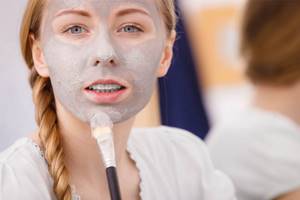
How to wash off an anti-acne mask?
After the required time, the components of the mask should be removed from the face by washing it with a solution of lemon and water. You can use tonic decoctions of yarrow, burdock, and calendula.
Anti-acne masks
You can make your own acne remedies. There are many recipes - you just have to choose the right one. Below are some compositions of acne masks at home.
Clay masks
It is recommended to use different types of clay for each skin type.
- Normal skin responds better to white clay.
- For dry dermis, blue clay is considered optimal.
- Green clay is suitable for oily skin.
And if you use this mineral product against acne, alternating all types of clay is acceptable.
Cosmetic clay:
- relieves irritation and redness of the skin;
- has a drying effect;
- gets rid of blackheads (comedone);
- prevents pores from becoming clogged.
The clay mass should be distributed on the skin in an even thin layer; after 10-30 minutes (it all depends on the composition), rinse with warm water, and then lubricate your face with oil.
For best results, clay masks are best done before bed.
Here are several options for masks based on cosmetic clay:
- Pharmacy clay – 1-2 tbsp; calendula tincture – 3 tsp; lemon juice – 3-4 drops.
- Clay; warm water (chamomile infusion).
- Cosmetic clay; vitamins A, E (in oil) – 1 drop each; tea tree oil – 2-3 drops; honey - a little.
- Clay – 1 tbsp; carrot juice – 1 tbsp; honey – 1 tbsp; crushed garlic - 0.5 tbsp.
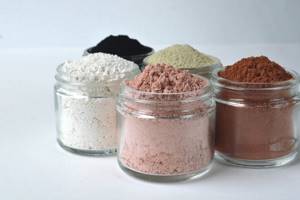
Egg-based masks
The egg will dry out pimples and relieve inflammation. Egg white has a lifting effect.
Below are the TOP 3 recipes with eggs.
- Egg – 1 pc.
Separate the white and yolk. Beat them separately. First lubricate your face with protein foam; after 30 minutes, wash off. Also - with whipped yolk. It is better to rinse off with cold water.
- Egg yolks – 2 pcs.; almond ether – 3 tbsp; ripe banana – 1 pc. (make a paste).
Combine everything, smear it over your face and neck. After 30 minutes, massage the skin a little with light movements; rinse with lemon water (1 tbsp water, 1 tsp lemon juice). After this, wash with water.
- Egg white – 1 pc.
Beat the egg white; lubricate your face with foam. After 15 minutes, rinse with water.
Oatmeal masks
If you have problem skin, acne and pimples, oatmeal-based formulations will be very helpful, since oats:
- disinfects and dries inflamed skin;
- practically hypoallergenic.
There are many recipes for masks based on this cereal. Moreover, some use oatmeal, and some use flakes.
Below are several options for masks with oatmeal.
- Oatmeal; onion – 1 pc.
Mix a small amount of boiled porridge with grated onion until smooth. Distribute generously onto face; Wash after 40 minutes.
- Oatmeal – 1 handful; egg white – 1 pc.; flour – 1 tbsp.
Masks for irritated skin: benefits and effects
The benefit of masks for irritated facial skin is to relieve all pain symptoms and treat inflammatory foci, as well as protect the epidermis from negative external influences through the use of the following ingredients:
- Sour cream, cottage cheese and kefir soothe sunburn, moisturize, whiten pigmentation;
- Yeast triggers active regeneration of damaged cells, restores the integrity of the skin;
- Herbs neutralize foci of inflammation;
- Oatmeal cleanses dead cells and moisturizes chapped areas;
- Honey has antibacterial, anti-inflammatory and antiseptic effects.
- The secret of masks for irritated skin is the use of only natural ingredients that can gently act on affected and inflamed areas.
Indications for use
Due to their gentle effect, masks for irritation on the face can be used with the correct recipe on any skin type, including the most sensitive. Problems for which anti-irritation masks help:
- Feeling of dryness and tightness, chapping, peeling, red spots;
- Inflammation, burns, swelling;
- Pigmentation and freckles.
In addition to the above, irritation relievers very effectively eliminate the consequences of deep cleaning (excessive redness, painful inflammation, etc.) and significantly shorten the rehabilitation period.
Rules for using masks against irritation:
- The procedure should begin with cleansing the skin of cosmetics, otherwise there will be no desired effect;
- The products can be used if necessary (i.e. immediately after symptoms are detected), but no more than 3 times a week.
To contents
Other home remedies for acne
Scrub with strawberries
- Fresh strawberries – 100 gr;
- powdered milk – 2 tsp;
- freshly squeezed lemon juice – 1 tsp.
Mix the mashed strawberries into a paste with the rest of the ingredients and place on your neck and face. After 15 minutes, remove with cool water, gently massaging the skin.
Herbal lotion
Chamomile cleanses the skin; catnip, lavender disinfect; thyme is an antimicrobial agent; yarrow removes toxins.
2 tbsp. crushed dried herbs:
- yarrow;
- catnip;
- chamomile;
- lavender;
- thyme.
Mix the herbs, brew with boiling water, let it brew, cool. In the morning and evening, lubricate the skin of the face and neck with lotion.
Healing ice
To eliminate acne and pimples, you can prepare special ice:
- dry chamomile (St. John's wort) - 2 tbsp. l.
Boil the herb over the fire for 10 minutes; cool, strain. Pour the cold broth into molds and freeze. Rub the inflamed skin with ice cubes instead of regular washing.
It is important to know:
- Herbal ice should not be used for rosacea.
Cleaning film
The film helps even out the skin, tighten pores, and remove redness:
- egg white – 1 pc.;
- lemon juice – 20 gr.
While beating the egg whites, gradually add lemon juice. Using a brush, spread the foam on the skin and leave to dry. After 3-5 minutes, lubricate your face again. When the film is completely dry, pull it off sharply.
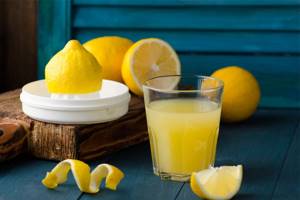
Essential oils for acne
- Tea tree oil can be used to lubricate acne 2-3 times a day.
- Rosemary essential oil is applied to the affected areas of the skin every other day.
- Jojoba oil will hydrate dry skin when applied twice daily.
- Grapeseed essential oil will remove shine and tightness (apply morning and evening).
- Sea buckthorn oil has a healing effect if you wipe acne with it twice a day.
Acne is an unpleasant, sometimes painful disease.
Among the variety of medicinal and cosmetic products, everyone can find something suitable for themselves.
Honey masks
Honey contains many components that are beneficial for the skin. It nourishes sensitive skin. However, it can cause an allergic reaction, so it is best to consult a doctor before using such a mask.
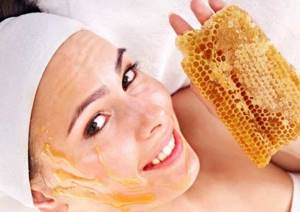
Honey should be mixed with another product and kept on the face for no more than 20 minutes. You can mix honey and milk powder in warm water or make a mixture of full-fat cottage cheese and honey. There are many variations.

